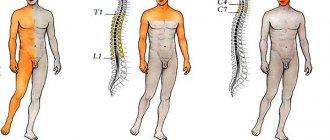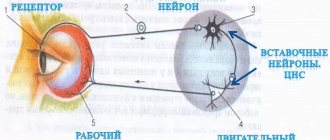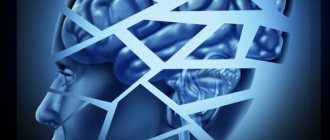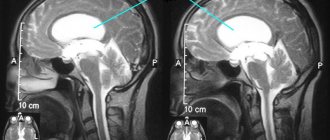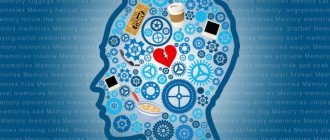Thinking in general is the ability of the human psyche to fully reflect reality, objects, phenomena, as well as significant connections between them. This is a typical feature of the human mind that is the result of long evolutionary changes. The possibility of mental activity allows you to effectively engage in a variety of forms of activity: from cognitive to creative, transformative.
Abstract thinking is the main form of cognitive abilities and plays the greatest role in the use of logic, formal logic, and its other forms, cognitive activity, studying the world around us and describing it in the form of consistent concepts.
What does abstract thinking mean? In simple words, it means the ability to describe objects and phenomena in a generalized form, using special conditional tools. That is, concepts. Determine the connections between them through judgment. Isolate new knowledge from already known premises through inferences. These are the most powerful ones capable of determining the truth, systematizing the world in all its diversity using standard mental operations. Such a possibility is present only in humans, as an intelligent species.
The lack of developed abstract thinking is considered normal until a certain age. The active formation of abstract theoretical thinking occurs in the period from 5 to 12-13 years. At this time, a person learns to operate with formal, abstract categories and fully understand their essence. The rate of development varies from person to person. You can develop the ability to think this way at any age; there is a group of exercises.
About forms of abstract thinking
Cognitive capabilities are heterogeneous in internal composition. The classification is carried out according to the predominant operation and type that is used in each specific situation when solving a specific problem. Forms are most accurately determined using methods and tools of formal logic. There are three main types in total.
Concept
The most universal category. Through the conceptual apparatus, a person has the opportunity to define any phenomenon, any object, process, all objects of the surrounding world in all their diversity. The concept reflects the most essential features of the structure being described, and therefore focuses attention on its distinctive features. This allows you to delimit objects from each other. For example, it is clear why an apple is an apple and not a watermelon, and a car is not a refrigerator. The concepts vary in scope; they can be visually represented in the form of Euler circles. There are several types of volume ratios within the framework of the definition of the conceptual apparatus:
- One concept includes another. For example, fruits, peaches. The first category will be more general compared to the other. Therefore, it is depicted in the form of a circle enclosing the second circle. And there can be many such circles, since in addition to peaches, the concepts of other fruits can be formalized.
- The concepts partially overlap. These are more contextual situations. For example, when objects are identified that have specific features and at the same time are somewhat similar. As an option. Students playing chess and students playing football. There will be a similarity in concepts in the part of students who play chess and football at the same time.
- Complete mismatch. When concepts do not have a common scope. Cars and elephants. People and pears.
The concept must be clearly defined; this is the basic requirement. Because without highlighting the essential features of a phenomenon, there can be no clear definition of the essence. The definition must include the main features, those that allow one to isolate an object from a group of others and give it generalized aspects.
Judgment
This is a kind of sentence in which something is affirmed or denied. The truth of what is said in this case should be sufficient to further apply judgments for mental and logical operations. For example, all people love to ride a bicycle. Only if the truth of what has been said is proven, can such a statement be used to obtain new knowledge.
Judgment is determined by volume. Thus, a statement is possible regarding a whole layer of objects (defined by the prefixes “everyone”, “nobody” or the pronouns “I”, “you”, which also have a sign of integrity in the context of formal logic). Also the use of part of objects (“some”, “those”, etc.). Depending on the type of judgment, the further method of operating them is determined.
Inference
The third elementary form of the named method of mental activity. It is considered a way to obtain new knowledge from already known ones. There are several types of this. The classic case is a syllogism. When there are two premises, then there are two judgments from which some new conclusions can be drawn. As an example:
- all machines are mechanisms;
- all mechanisms run on fuel;
- therefore, all cars run on fuel.
In this case, a person gains knowledge indirectly, using simple tools. You can omit the essence of the phenomenon, bring it to the point of absurdity, but the essence will remain the same:
- all people are pears;
- all pears love to sleep;
- therefore, all people love to sleep.
In formal logic, there are schemes that determine the final conclusion from the premises. The so-called figures of a syllogism. There are four of them in total, according to the number of possible initial judgments (denying all or in part, affirming all or in part).
There are other ways to gain new knowledge. For example, lemmas, etc. They are derived from the basic ones and have their own resolution laws. Also inductive and deductive inferences that come from other initial premises.
Abstract thinking is directly related to formal logic and mathematical abilities. Developing one, the other develops in parallel.
Thus, the forms of abstract thinking include concept, judgment and, as a way of obtaining new knowledge, inference.
Why is it necessary to develop these skills?
This type begins to develop in a child from an early age. Every child loved to fantasize and daydream as a child, imagining things that are unlikely to happen. This is the very thinking when we abstracted from reality.
Ask a question
At school, this skill contributed to the study of exact fields of science (the same geometry). At university, the ability was also useful in solving numerous abstract problems. And finally, at work we distribute responsibilities, group them according to specific characteristics, cope with difficulties and often even find some connection between them. We do the same thing when we think about the meaning of our own lives.
There are quite a few areas where this property plays a major role. This is a philosophical teaching, and writing, and psychology. Another advantage is that we can dream, plan for the future, talk about religion or joke. And this list can be continued endlessly.
Such reflections allow us to remain developed and intelligent. We see what formally does not exist, and we know how to study the phenomena of reality. Therefore, the importance of this improvement cannot be overestimated - this is how we increase intelligence, achieve success both at work and in personal life, and use simple methods for this.
Characteristics of abstract thinking
A group of specific characteristics is typical for this type of mental activity.
Distraction, lack of connection with a single specific object
Continuing the examples mentioned above. If they talk about an apple. This refers to a class of fruit, a variety, rather than any specific apple. However, the object can also be a specific apple if some conclusion is drawn regarding it. For example: “An apple is on the table. I didn't put it on the table. Only my neighbor is in the room with me. Therefore, he put the apple on the table.” Through simple inference, a person logically comes to a conclusion about the actions of another person. An apple in this context is just an object that is used as a concrete concept to obtain concrete knowledge, but by abstract methods.
Generality
That is, maximum distraction from minor moments when acquiring new knowledge. There is no need to focus on unimportant facts. It doesn’t matter whether the neighbor put the apple with his left or right hand, to put it exaggeratedly. When solving complex problems, such generalization allows you to abandon many points that do not make any sense in the context of the problem being solved.
Operating with formal units, concepts, judgments, conclusions
When applying the methods mentioned above, a person uses logical structures. They have clear boundaries. This is very convenient because it allows you to concentrate on the methods, eliminates possible errors and makes it possible to clearly structure the information received.
Presence of an explicit verbal component
Although not in all cases it is present at an early stage. It's about the final product. Abstract thinking always has a final phase, a product that is used within the framework of theorizing or hypothesizing. Therefore, it is necessary to put conclusions into verbal form. Moreover, usually in writing for further analysis and use of the final result as a starting point for further activity. However, in the process, intermediate results may be in the form of thoughts that do not have verbal expression.
The described features are typical of abstract logical thinking. And only for him.
Types of Abstractions
To understand what abstract thinking means, it is worth understanding the units of patterns, their varieties and purposes. There are only six of them:
- Isolating – helps highlight those elements that are emphasized.
- Constructivization – expresses “blurry” objects in a clearer form.
- Actual infinity – establishes infinite components as finite.
- Generalizing – cuts off the personal characteristics of the object and concentrates on its general characteristics.
- Primitive-sensual - highlights some properties and traits and avoids others.
- Idealizing - changes the real description to an ideal template that hides all the shortcomings.
In addition, there is a classification by task:
- Formal - phenomena are considered through specific external manifestations, without which they would not exist.
- Substantive – elements that can exist independently are highlighted.
Using all abstractions and the possibilities they present, a person isolates from reality what he physically cannot see, hear or feel. But the generalized patterns of what is happening are conveyed to us through speech by parents, teachers or educators. With this wealth of knowledge, we do not have to explain already known truths every time they happen. But here it is worth mentioning the other side of the issue.
In what cases is there a violation of normal cognitive abilities and can this be corrected?
Abstract thinking is a typical feature of the human personality and psyche. It does not develop in one moment. It takes some time. Usually, abilities are fully formed by adolescence; there may be variants with delayed development or early development. The development of abstract thinking in a person ends by the age of 15-16 years. In psychology and neuropsychology there are some discrepancies on this issue, but they are not significant. Deviations should be considered as a potential symptom of psychopathology.
Impairment of abstract thinking can be the result of congenital pathologies of the genetic profile of the central nervous system. These include oligophrenia in different types, Down syndrome. These are the main diagnoses. There are others too. They are united by pronounced dementia and lack of ability for logical thinking. In almost 100% of cases, other forms of mental activity are also affected. There is a drop in IQ to critically low levels. With a mild degree of mental retardation or debility, it is possible to perform simple operations. With sufficient compensation, changes are minimal.
Abstract, abstract thinking is a target in schizophrenia. Especially malignant or long-term. Intelligence formally remains at a normal level, but the patient is unable to use the tools, so a semblance of dementia begins. This is a type of defect, the so-called negative symptoms. Typically, such conditions are not subject to reverse development or any correction. However, modern psychotropic drugs have the ability to combat the negative manifestations of the pathological process.
There are diagnoses in which the disorders are temporary. Although they can be significantly expressed. These include, for example, depressive states, manic-depressive psychoses, and reactive psychoses.
The speed of abstract thinking decreases when using alcohol or taking drugs. Or mental abilities are seriously weakened.
There may be several options. The issue of diagnosis is no longer the sphere of psychology. The problem is solved by psychiatrists, psychotherapists, and in some cases neurologists in tandem with mental health specialists.
It is not always possible to cope with these problems. It all depends on the diagnosis. The highest quality correction is carried out when eliminating depression, alcohol disorders, and the consequences of drug use.
How to learn to abstract yourself
Anyone can abstract, often this happens unconsciously, as a defensive reaction from the surrounding reality. Learning to do this is useful to maintain composure, control thoughts and isolate yourself from the negativity of social life. Abstraction will help you ignore negative manifestations; an example of this is the memory of a pleasant evening or childhood years.
From society
To abstract yourself from society, you need to concentrate on positive moments, learn to rest, and relax. It is important to clearly formulate thoughts and goals; this will help you understand your role in society and concentrate at the right time. This is facilitated by planning the day, drawing up plans, and the ability to prioritize goals. If, for example, noise interferes with concentration, you need to imagine it as a background that will not stop without concentrating on it. Then the brain will stop paying attention to the noise. Slow breathing on a count will help you to disengage. You need to relax and count to ten.
It will never be possible to isolate yourself from society and crowds; it is impossible to avoid crowded places. A negative reaction will be reduced by a proper daily routine and good nutrition. Imagination will help you transport yourself to a pleasant place.
Note! Thought processes suppress negative emotions. Stress and lack of sleep contribute to impaired abstract thinking.
Abstraction
From a person
To abstract yourself from a person, you need to not concentrate on the negative. If emotions take over, take a break. For example, stop communicating for a while. Distraction will help you switch to something positive.
You need to concentrate on the positive qualities of a person, paying a lot of attention to them. Remember what happened more in life related to him: good or bad. Focusing solely on the negative only hurts the relationship. Abstraction is the ability to sweep away the unnecessary.
From unpleasant people
When communicating with people does not bring pleasure, but you cannot stop it, you need to learn to abstract yourself. To do this, it is important to understand what exactly leads to negative emotions, identify the problem and begin to fight it. Communication and conversation with unpleasant people can help correct the situation. A calm dialogue in which the problem is voiced will get rid of the irritating factor.
From the situation
Looking at it from the outside will help you abstract yourself from the situation, as if it were happening to another person. Emotions become dull, the mind becomes clear, and solving the problem becomes much easier. You can imagine that this is a film and you need to figure out what the main characters should do to get rid of the negativity.
In any situation, you need to notice only what is important, filtering out unnecessary details. Perhaps they are what lead to irritation. Understanding that this is not worth attention will help you calm down and cope with negativity.
Abstract thinking helps you survive and become happy in the modern world. After all, there is not always an exact plan, and it is impossible to have all the knowledge. An abstract person is able to come to conclusions by analyzing available facts. The main thing is to be able to build logical chains and use your imagination. It is abstraction that helps a person draw conclusions and make decisions.
What tools does abstract thinking use: types and examples
Formal methods use three main modes of mental activity. However, this is not all. To gain deeper knowledge about the subject of research, a lot of auxiliary tools are used.
Analysis
The process of speculative division of an entire object, phenomenon or process into its component parts. Depending on the subspecies used, it is then possible to study each individual component or highlight the most significant features. An example of the first is the concept of crime in law. Includes objective and subjective sides, object and subject. It is possible to separate a very real object during analysis, to physically separate its parts. In the study of mechanisms, human organs, tissues within the framework of anatomy, pathological anatomy, etc.
If we talk about the second subtype, the most typical example is the development of a definition of a concept, the derivation of a definition. For example, a person. What properties can be identified? Walks upright, has two pairs of limbs, eyes, hearing organs, is intelligent, has the ability to think and speak, etc. When analyzing the second type, only essential features need to be highlighted. What is important in this case? Speech ability, mental activity, upright posture. This is how this technique is used.
Synthesis
The opposite phenomenon to analysis. The process of combining component parts into a whole. It is especially actively used in scientific practice, in the application of legal norms by specialists in the field of jurisprudence, doctors when conducting diagnostics and drawing up a unified clinical picture (then hypotheses regarding the disease are put forward). Mental operations are closely related to everyday life.
Systematization (or classification)
Distribution of a group of concepts or real objects into classes. It has a formal basis - that is, the line along which the distinction is made. An example is geometric shapes. The criterion is the number of angles. Absent - ovals, ellipses, circles. Three is a triangle. Four - square, parallelogram, rectangle. And so on. The most productive use of classification is in scientific practice and statistics.
Comparison or comparative analysis
It consists of comparing two structures and objects. In identifying similarities and differences. It only makes sense when the objects are truly similar. There is no point in comparing people and fruits, it is absurd and will not bring any new knowledge, since the essence is already well understood. But the comparison of humans and primates, humans and animals, and so on, makes sense in the context of evolutionary concepts, biological, anatomical knowledge.
Specification
Or the deductive method. Based on the transition from general knowledge to a particular case of the existence of the same phenomenon. To take an example: in European countries it is hot in the summer. Ukraine is a European country. Consequently, it is hot in Ukraine in summer. Essentially this is a type of inference.
Induction
There is also the opposite phenomenon. When a movement is made from private knowledge to general knowledge. It would be fair to give this option here. It's hot in Ukraine in the summer. Ukraine is part of Europe. Consequently, European countries are hot in summer. There's a big problem here. While deductive inferences are mostly true, inductive inferences are likely to be false. Because the law of sufficient reason is violated. Generalizations are made with great caution and require empirical confirmation.
Analogy
Transferring the properties of one object to another. Such a transfer also requires a careful approach, since the truth is not always the case. However, this is a bold technique; it allows you to take a fresh look at familiar things. It is used not only in scientific activities, but also in applied fields. Based on this principle, some laws of aerodynamics were determined, aircraft were designed, etc. The basis was studies of the life activity of birds and biological creatures.
These tools, when used correctly, provide a wealth of information. Allows you to achieve high-quality results in research and practical activities. The areas can be very different. Forms of abstract thinking in such a context also act as tools, only more general ones.
Upon analysis, the difference between abstract and concrete thinking becomes clear. If the first deals with logical constructions and follows clear laws, the second is spontaneous and based on experience, working with specific objects here and now (although the logical variety can also deal with specific objects if they have meaning within the context of the situation).
Examples of how to think abstractly
One of the brightest, perhaps, are the exact scientific fields: mathematics, chemistry, geometry, physics. Such reflections are called fundamental to them. Scientists do not see or feel numbers, figures and chemical elements as such, but they know how to operate with them: count, measure, combine.
Or take the concept of “life”. What it is? Many philosophers have sought the answer to this question. Essentially, this is the existence of a body where consciousness is placed. But we still won’t be able to say clearly about this concept.
This type also occurs when a person thinks about the future. We will never know for sure what will happen to us tomorrow, in a month or a year. But we tend to make plans, dream or set goals and go towards achieving them. Human activity has a certain direction. We are unlikely to be able to change some things, but such thinking helps us develop a strategy and go towards what we want. In other words, this reality does not yet exist, but we are trying to do everything so that it is in accordance with our ideas.
It is impossible not to mention such a property as idealization. Many people imagine reality and the individuals living in it as ideal. A well-known stereotype is to wait for the “prince.”
It is worth touching on examples of deceptive judgments. The first thing that comes to mind again concerns the topic of relationships. Some female representatives confidently claim that all guys are bad.
But such a conclusion is based solely on subjective opinion. If a girl is unlucky with her chosen one, and he offended or deceived her, this does not mean that everyone is like that. But in this case, men are spoken of as a specific category with their own characteristics, and therefore the traits that one of them has are attributed to all.
There are many similar examples, but they all prove that abstract thinking is of great importance in our everyday thought process. Of course, each person manifests it differently and there will always be something that needs to be developed. And if you don’t know where to start, then I will help you take the first steps in self-improvement; to do this, you just need to sign up for my personal consultation.
Methods for checking the degree of development of cognitive abilities
Checking the degree of development of abstract thinking does not present much difficulty. Psychologists also deal with it. How exactly can abilities be explored? The following group of tests is used:
- The standard test for abstract thinking is the Eysenck test. Allows you to explore intellectual capabilities. Additionally, other tests may be used, depending on the situation.
- The abstract-verbal style of thinking can be assessed based on the results of a conversation with a person. Additionally, a situation or topic may be presented, on which the subject must draw conclusions. This will provide more information than a simple oral interview.
- It is possible to use special logical tasks. They allow you to study the speed of abstract thinking, its quality, direction, and the ability to quickly switch from task to task, from process to process.
A person can check himself. However, it is better when an experienced psychologist is involved in the case.
Is it possible to develop logical thinking in adults?
It is possible and even necessary. The world is changing very quickly, and with the old “baggage” of knowledge it can be difficult to think about something carefully. Many people believe that the basics they receive at school or university will be enough, but this is not entirely true.
The main thing is to overcome your own laziness. Yes, we don’t have enough time, and not everyone will agree to spend free minutes on development. Meanwhile, there is nothing complicated here.
Here you don’t have to sit for hours on books or refuse to communicate with family or friends: many logical exercises can be done in a company.
Did you know? Many people remember the Rubik's Cube, which peaked in popularity in the 1980s. The toy invented by the Hungarian sculptor was so widespread that in the years 80-83 of the twentieth century, even an official newsletter was published entirely dedicated to the cube.
Is it possible to develop abstract thinking, how and how long will it take?
How to develop abstract thinking and is it even possible to do this? Yes, you can. Methods exist. However, this is not a quick process. According to various estimates, it will take from several months to a year to achieve high-quality results. It is easiest to develop such abilities in adults. Children don’t have much sense; you need to wait for the final formation of logical abilities and only then start. That is, during the teenage years. Techniques:
- Oral exercises. Reasoning on specific topics with conclusions and others. They also allow you to develop a verbal style of mental activity.
- Solving logical problems. As much as possible. Preferably with a gradual increase in complexity and a clear description of the process of thinking. Guesswork and simple coincidences must be excluded.
- Writing essays on specific topics. Expressing arguments for, against, one’s own position and conclusions on the issue. This allows you to develop not only abstract, but also critical thinking.
Essence and benefits
So, the ability to think helps a person build his own views on the world around him, cope with life’s difficulties, and achieve goals. But in most cases we use the exact variety, operating with detailed data.
When we see a guy sitting on a bench and cracking sunflower seeds, it seems to us that he is a slacker. That is, we think based on the specifics that are in front of us. But we can do this more generally, and then we will learn much more.
Stepping away from the facts and assuming context, we understand that perhaps the young man had a fight with his girlfriend, and before that he had given up smoking and therefore replaces the cigarette in a similar way. Or today he has a free day and he decided to relax and get some fresh air. Abstract thinking gives us room for imagination, to look at what is happening from different points of view and to learn a lot of interesting things.
This method is especially useful in specific everyday events when a person finds himself in an intellectual dead end. That is, she finds it difficult to find a solution to a problem or develop an objective view. But abstraction allows you to notice what was not so obvious before.
Concept of abstraction
The process of abstraction differs from abstract thinking in that this mental operation allows one to give general characteristics to a specific object. For example - microwave oven - oven - kitchen appliances. As a result of such splitting, an object is created that cannot be seen or touched. Technology is a general concept that connects many objects. But at the same time, the person understands what we are talking about. Thus, abstraction is a process as a result of which abstract ideas and images appear.
